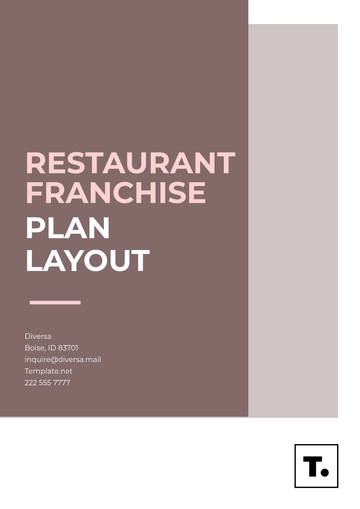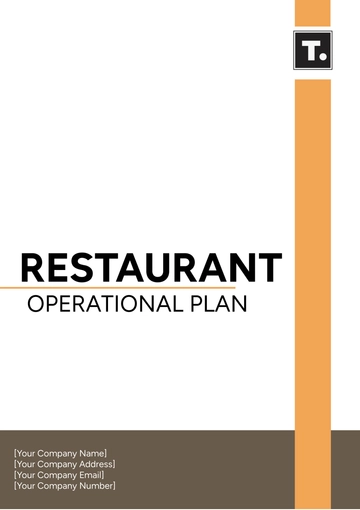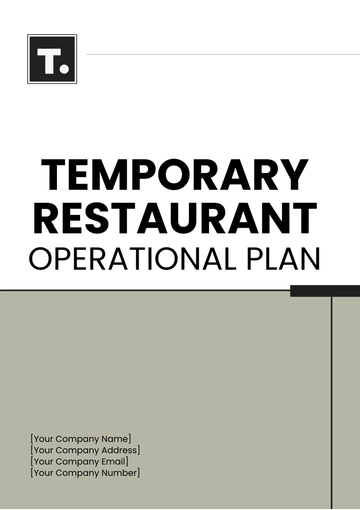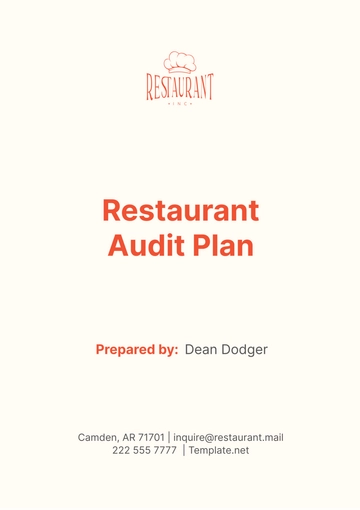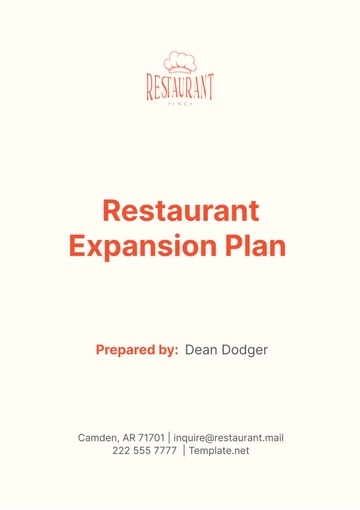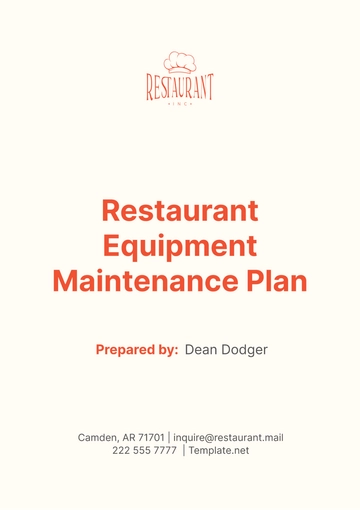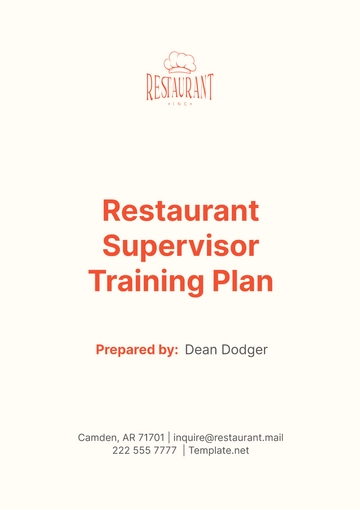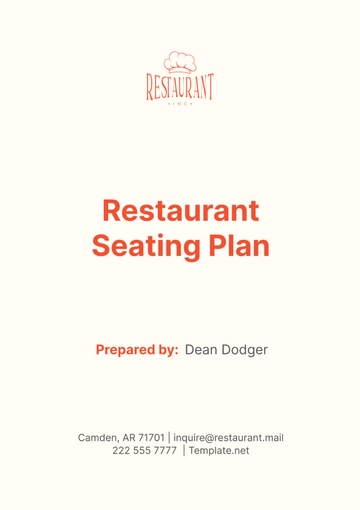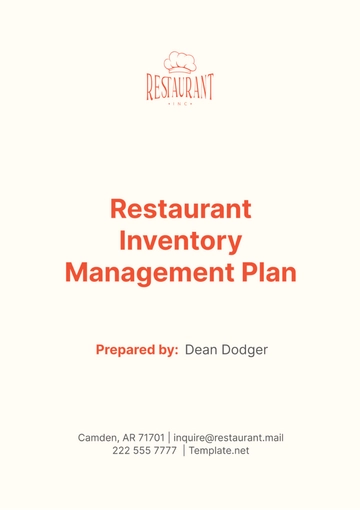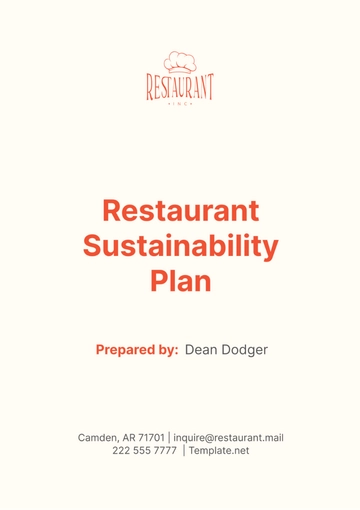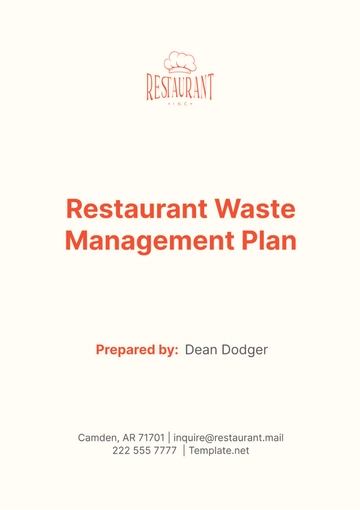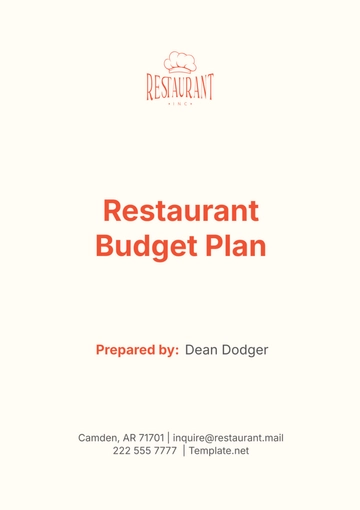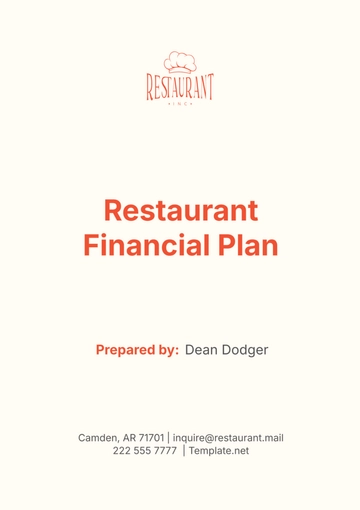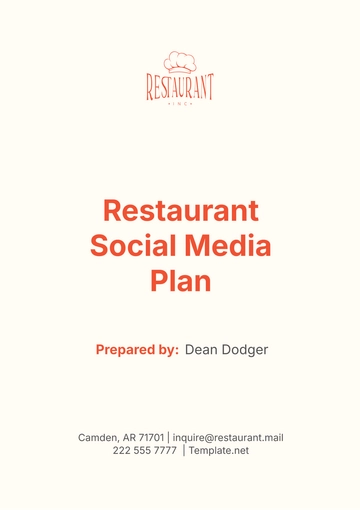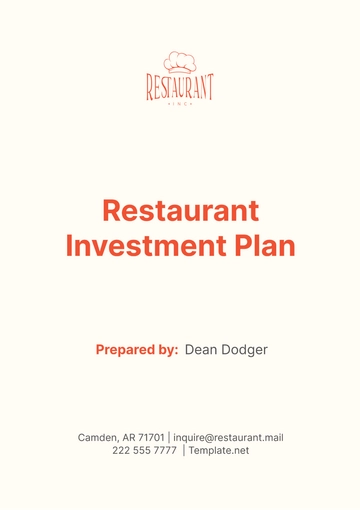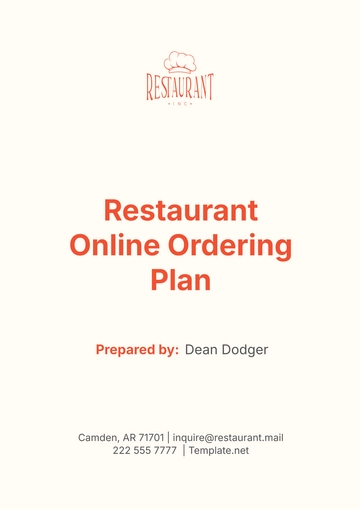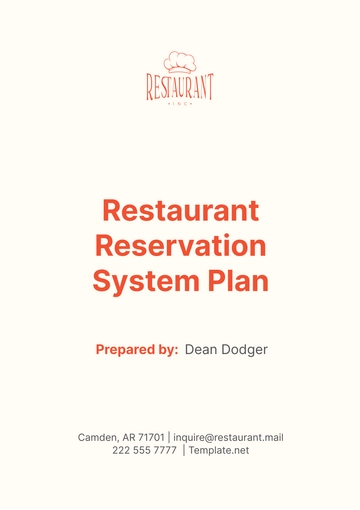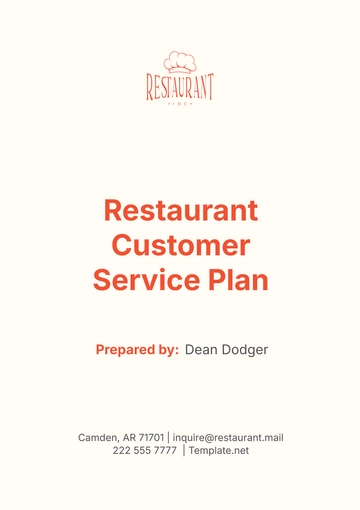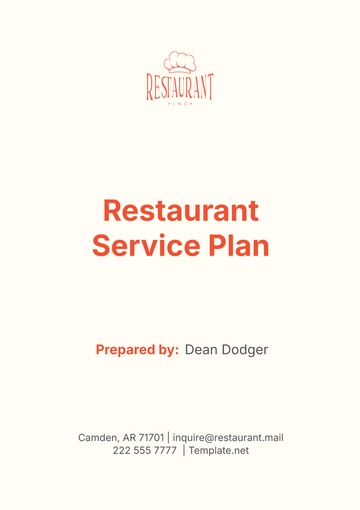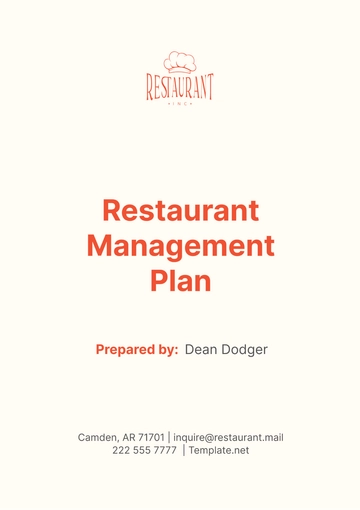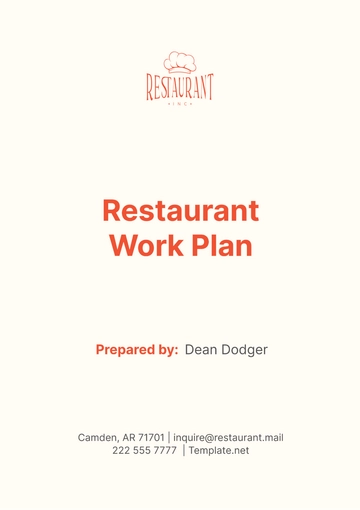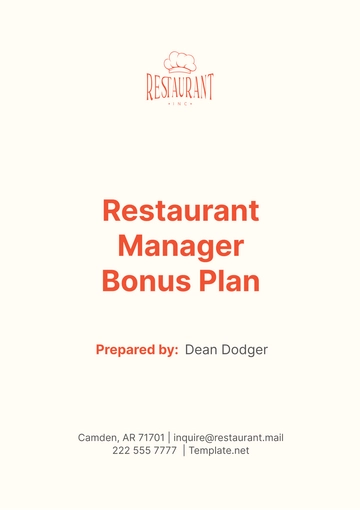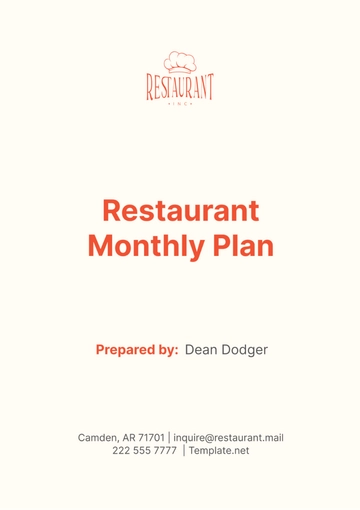Free Restaurant Quality Control Plan
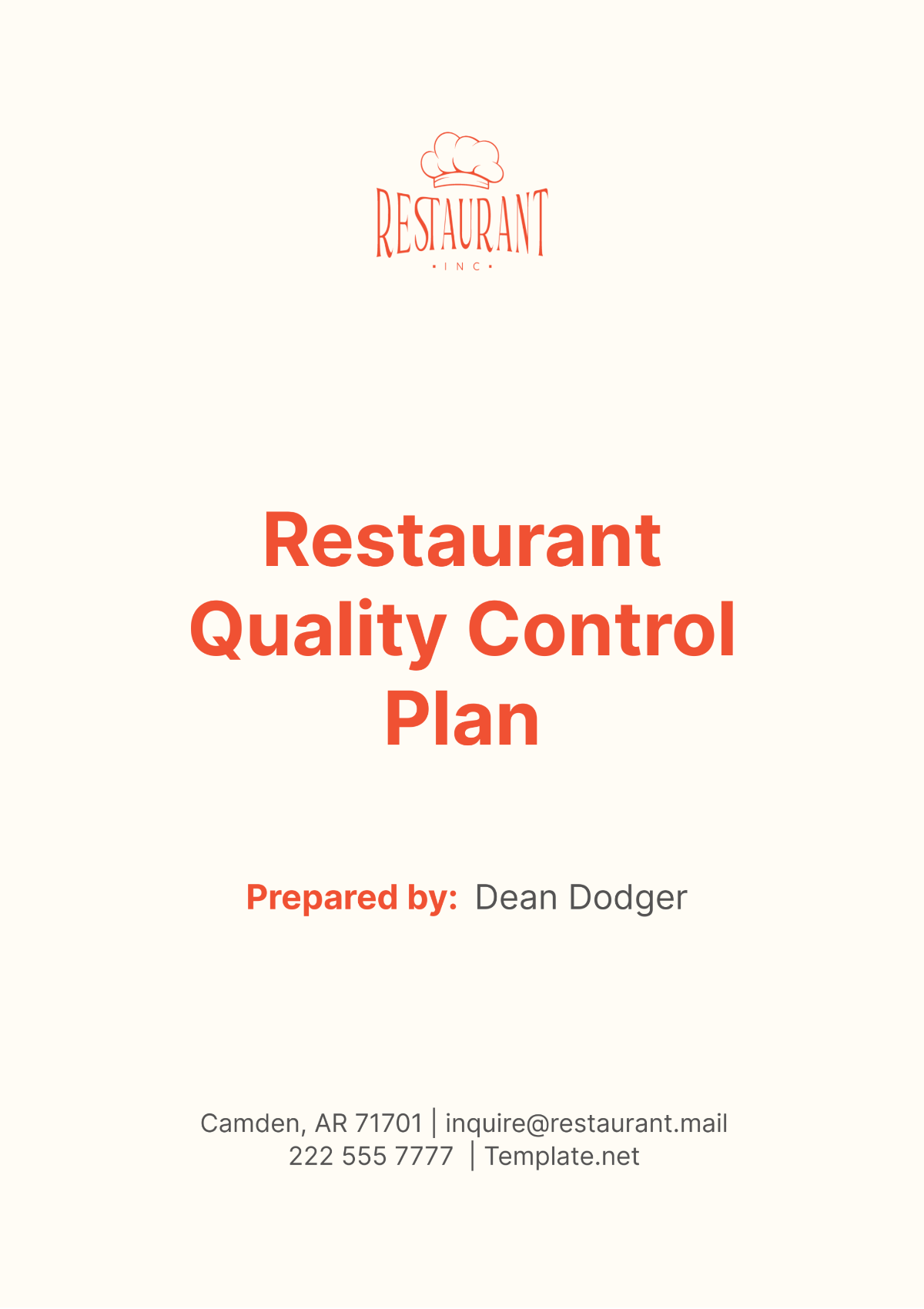
I. Objective
The foremost objective of the Restaurant Quality Control Plan at [Your Company Name] is to set a benchmark in food safety, presentation, and customer service that surpasses industry standards. Our approach is built on a foundation of regular and meticulous inspections across all operational facets—from kitchen cleanliness to service etiquette—to ensure comprehensive compliance and excellence. These standards are not merely targets but are integral to our commitment to delivering an unparalleled dining experience that consistently delights our patrons.
We recognize that our staff plays a crucial role in achieving these high standards. Therefore, we have instituted a rigorous training program that occurs on a monthly basis, focusing on critical areas such as food handling, customer interaction, and problem-solving skills. This continuous professional development ensures that every team member, from the chefs to the service staff, is equipped with the knowledge and tools necessary to excel in their roles. By embedding these practices into our daily operations, we cultivate a proactive workforce adept at maintaining and elevating the quality of service.
To supplement our internal efforts, we employ external quality assurance measures such as mystery diner programs and thorough audits of our food supply chain. These initiatives help us to objectively assess and refine our service delivery and food quality. By regularly reviewing and adjusting our supply chain management, we guarantee the integrity and safety of our ingredients, which is fundamental to our culinary excellence. This structured oversight mechanism supports our continuous improvement ethos and ensures that [Your Company Name] remains at the forefront of the hospitality industry.
II. Monthly Inspections
Monthly inspections form a critical part of our Restaurant Quality Control Plan, ensuring that every aspect of our operation aligns with the rigorous standards we set at [Your Company Name]. These inspections cover a wide range of criteria, from hygiene and safety compliance to the precision of food presentation, and are designed to uphold our commitment to operational excellence and customer satisfaction.
To systematize our inspection process, we use a detailed checklist that includes various elements of our front-of-house and back-of-house operations. Below is a comprehensive table outlining the key areas of focus for our monthly inspections:
Area of Inspection | Criteria | Inspection Method | Expected Standard | Responsibility |
|---|---|---|---|---|
Health and Safety Compliance | Adherence to local health codes; proper food storage and handling; employee hygiene | Physical walkthroughs; review of procedural documentation | No violations; 100% compliance with health regulations | Safety Officer |
Food Preparation and Presentation | Consistency in dish execution; alignment with menu descriptions; taste and visual appeal | Random sampling of dishes; visual inspection during service hours | High-quality, consistent with menu specifications | Head Chef |
Cleanliness and Organization | Cleanliness of dining areas; organization and cleanliness of kitchen spaces; storage areas | Detailed checklist for each area; random spot checks | Spotless dining and kitchen areas; well-organized storage | Maintenance Supervisor |
Kitchen Equipment Functionality and Safety | Operational efficiency of kitchen appliances; safety of equipment usage | Regular testing and maintenance checks; documentation of equipment status | Fully functional and safe equipment with no hazards | Equipment Manager |
Following each inspection, a detailed report is generated, documenting observations, areas that require improvement, and commendations where applicable. These findings are then reviewed in a meeting with respective team leaders to discuss and implement corrective actions promptly. This structured review process ensures not only that issues are addressed efficiently but also that commendations for areas of excellence are acknowledged, fostering a culture of continuous improvement and team motivation.
III. Staff Training
Consistent and comprehensive training of our staff is a cornerstone of our Restaurant Quality Control Plan at [Your Company Name]. To ensure our team remains proficient and ahead in industry standards, we provide structured monthly training sessions. These sessions are crucial for maintaining high standards of service, culinary skills, and safety procedures.
Below is a detailed table that outlines the components of our monthly training sessions:
Training Module | Topics Covered | Methodology | Evaluation Criteria | Responsible Party |
|---|---|---|---|---|
Food Handling and Sanitation | Proper food storage; cross-contamination prevention; personal hygiene | Demonstrations; hands-on practice; periodic quizzes | Observation of practices during shifts; health inspection results | Hygiene Officer |
Customer Service Techniques | Communication skills; handling difficult situations; upselling techniques | Role-playing scenarios; video tutorials; group discussions | Feedback from customers; mystery diner reports | Customer Service Manager |
Emergency Response | Fire safety; accident response; first aid | Live drills; instructional seminars; equipment usage | Emergency drill performance; staff feedback sessions | Safety Coordinator |
The effectiveness of each training module is evaluated through direct observation of staff during their shifts, as well as through feedback gathered from mystery diners. This dual approach allows us to measure the immediate impact of our training on daily operations and customer interactions. By continually assessing and updating our training content, we ensure that our team not only meets but exceeds the evolving standards and expectations of our patrons, thereby reinforcing our commitment to excellence in the dynamic restaurant industry.
IV. Customer Feedback and Improvement
Gathering and analyzing customer feedback is an integral aspect of the dynamic improvement process at [Your Company Name]. This ongoing collection of insights directly from our guests allows us to pinpoint areas for enhancement and reinforce practices that are resonating well with our diners. Below, you'll find a detailed table outlining the various mechanisms through which we capture customer feedback and how each contributes to our continuous improvement strategy:
Feedback Mechanism | Collection Method | Review Process | Responsible Party |
|---|---|---|---|
Digital Surveys Post-Visit | Automated email system linked to our reservation platform. | Data aggregated and analyzed for trends and common themes in monthly quality meetings. | Customer Relations Manager |
Comment Cards at Tables | Cards collected at the end of each meal by service staff. | Cards reviewed weekly, with data compiled into a monthly report. | Front of House Manager |
Online Reviews Monitoring | Dedicated team uses software tools to aggregate reviews and alert management of any immediate concerns. | Monthly review sessions to assess sentiment and respond to feedback appropriately. | Social Media & Reviews Analyst |
Direct Feedback During Service | Staff trained to report feedback during or after the shift. | Real-time issues addressed immediately; summarized in daily briefings and discussed in detail during monthly meetings. | Service Team Leaders |
This systematic approach to collecting and analyzing feedback ensures that all voices are heard and valued, fostering a responsive environment where continuous improvement is not just a goal but a daily practice. By integrating these insights into our monthly quality meetings, we create actionable strategies to enhance our service and refine the dining experience, ensuring that [Your Company Name] remains a leader in customer satisfaction.
V. Supplier Audits and Compliance
Ensuring the integrity and quality of our supply chain is crucial for upholding the promise of excellence at [Your Company Name]. Regular audits of our food suppliers help guarantee that our standards for quality, safety, and ethical practices are met consistently. Below is a detailed table that outlines the focus areas of our supplier audits and the process we employ to maintain compliance:
Audit Focus Area | Criteria | Audit Method | Compliance Requirement | Responsible Party |
|---|---|---|---|---|
Food Safety and Hygiene Practices | Compliance with local health codes; cleanliness of facilities; employee training and handling practices | On-site inspections; review of safety records | Full compliance with health and safety regulations | Quality Assurance Manager |
Quality of Ingredients Supplied | Freshness, purity, and specification compliance of ingredients | Sample testing; random spot checks during deliveries | High-quality materials consistent with contractual specifications | Procurement Officer |
Consistency and Reliability of Supply | Timeliness of deliveries; accuracy and completeness of orders | Tracking of delivery schedules; review of order accuracy rates | Reliable delivery with minimal discrepancies | Supply Chain Coordinator |
Environmental and Ethical Compliance | Adherence to environmental laws and regulations; ethical sourcing practices | Review of certifications and compliance documents; supplier self-assessments | Compliance with environmental and ethical standards set by [Your Company Name] | Compliance Officer |
Suppliers found not meeting these established standards are provided with clear guidelines and timelines to achieve compliance. Should a supplier fail to meet the corrective requirements within the stipulated timeframe, we will initiate corrective measures, which may include re-evaluating the partnership or seeking alternative suppliers. This strict adherence to compliance helps us ensure that every element of our product meets our high standards, supporting our commitment to excellence and sustainability.
- 100% Customizable, free editor
- Access 1 Million+ Templates, photo’s & graphics
- Download or share as a template
- Click and replace photos, graphics, text, backgrounds
- Resize, crop, AI write & more
- Access advanced editor
Ensure top-notch dining experiences with Template.net’s Restaurant Quality Control Plan Template. Fully editable and customizable, this template aids in structuring consistent quality measures. Editable in our AI Editor Tool, it’s designed to elevate your brand's credibility. Guarantee superior quality and customer satisfaction, streamline your processes, and enhance your establishment’s reputation with our expertly crafted tool.
You may also like
- Finance Plan
- Construction Plan
- Sales Plan
- Development Plan
- Career Plan
- Budget Plan
- HR Plan
- Education Plan
- Transition Plan
- Work Plan
- Training Plan
- Communication Plan
- Operation Plan
- Health And Safety Plan
- Strategy Plan
- Professional Development Plan
- Advertising Plan
- Risk Management Plan
- Restaurant Plan
- School Plan
- Nursing Home Patient Care Plan
- Nursing Care Plan
- Plan Event
- Startup Plan
- Social Media Plan
- Staffing Plan
- Annual Plan
- Content Plan
- Payment Plan
- Implementation Plan
- Hotel Plan
- Workout Plan
- Accounting Plan
- Campaign Plan
- Essay Plan
- 30 60 90 Day Plan
- Research Plan
- Recruitment Plan
- 90 Day Plan
- Quarterly Plan
- Emergency Plan
- 5 Year Plan
- Gym Plan
- Personal Plan
- IT and Software Plan
- Treatment Plan
- Real Estate Plan
- Law Firm Plan
- Healthcare Plan
- Improvement Plan
- Media Plan
- 5 Year Business Plan
- Learning Plan
- Marketing Campaign Plan
- Travel Agency Plan
- Cleaning Services Plan
- Interior Design Plan
- Performance Plan
- PR Plan
- Birth Plan
- Life Plan
- SEO Plan
- Disaster Recovery Plan
- Continuity Plan
- Launch Plan
- Legal Plan
- Behavior Plan
- Performance Improvement Plan
- Salon Plan
- Security Plan
- Security Management Plan
- Employee Development Plan
- Quality Plan
- Service Improvement Plan
- Growth Plan
- Incident Response Plan
- Basketball Plan
- Emergency Action Plan
- Product Launch Plan
- Spa Plan
- Employee Training Plan
- Data Analysis Plan
- Employee Action Plan
- Territory Plan
- Audit Plan
- Classroom Plan
- Activity Plan
- Parenting Plan
- Care Plan
- Project Execution Plan
- Exercise Plan
- Internship Plan
- Software Development Plan
- Continuous Improvement Plan
- Leave Plan
- 90 Day Sales Plan
- Advertising Agency Plan
- Employee Transition Plan
- Smart Action Plan
- Workplace Safety Plan
- Behavior Change Plan
- Contingency Plan
- Continuity of Operations Plan
- Health Plan
- Quality Control Plan
- Self Plan
- Sports Development Plan
- Change Management Plan
- Ecommerce Plan
- Personal Financial Plan
- Process Improvement Plan
- 30-60-90 Day Sales Plan
- Crisis Management Plan
- Engagement Plan
- Execution Plan
- Pandemic Plan
- Quality Assurance Plan
- Service Continuity Plan
- Agile Project Plan
- Fundraising Plan
- Job Transition Plan
- Asset Maintenance Plan
- Maintenance Plan
- Software Test Plan
- Staff Training and Development Plan
- 3 Year Plan
- Brand Activation Plan
- Release Plan
- Resource Plan
- Risk Mitigation Plan
- Teacher Plan
- 30 60 90 Day Plan for New Manager
- Food Safety Plan
- Food Truck Plan
- Hiring Plan
- Quality Management Plan
- Wellness Plan
- Behavior Intervention Plan
- Bonus Plan
- Investment Plan
- Maternity Leave Plan
- Pandemic Response Plan
- Succession Planning
- Coaching Plan
- Configuration Management Plan
- Remote Work Plan
- Self Care Plan
- Teaching Plan
- 100-Day Plan
- HACCP Plan
- Student Plan
- Sustainability Plan
- 30 60 90 Day Plan for Interview
- Access Plan
- Site Specific Safety Plan
